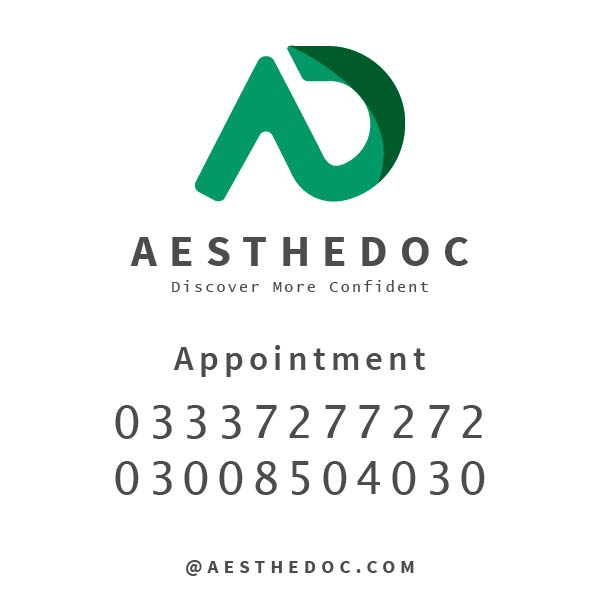Face Lift
Non-Surgical Face Lift in Pakistan

Introduction:
As the beauty and aesthetics industry in Pakistan continues to flourish, more individuals are seeking non-invasive alternatives to traditional surgical procedures for facial rejuvenation. The non-surgical face lift has emerged as a popular option for those looking to enhance their facial appearance without the need for incisions or extended downtime. This article explores the non-surgical face lift in Pakistan, its various techniques, benefits, safety considerations. And how it can provide a youthful and refreshed look without undergoing surgery.
Understanding Non-Surgical Face Lift:
A non-surgical face lift, also known as a liquid face lift or thread lift, is a minimally invasive cosmetic procedure. That utilizes various non-surgical techniques to lift and rejuvenate the face. Unlike a traditional surgical face lift, which involves incisions and tissue manipulation. But the non-surgical approach relies on injectables, dermal fillers, and threads to achieve facial rejuvenation without the need for surgery.
Different Techniques of Non-Surgical Face Lift in Pakistan:
- Dermal Fillers: Dermal fillers, such as hyaluronic acid-based fillers, are injectable substances used to restore volume and plumpness to the face. By filling in wrinkles and adding volume to sunken areas. Dermal fillers can create a smoother and more youthful facial appearance.
- Botox and Dysport: Botulinum toxin type A, commonly known as Botox or Dysport. It is a muscle-relaxing injectable used to reduce the appearance of dynamic wrinkles, such as crow’s feet and frown lines. By temporarily paralyzing specific facial muscles, Botox can smooth out wrinkles and lines, providing a more relaxed and refreshed look.
- Thread Lift: The thread lift is a non-surgical technique that involves inserting dissolvable sutures under the skin to lift sagging facial tissues. The threads create a supportive network, giving the face a subtle lift and improving skin tightness over time.
Benefits of Non-Surgical Face Lift:
- Non-Invasive: One of the primary advantages of a non-surgical face lift is its non-invasive nature. Patients can enjoy facial rejuvenation without the need for incisions, reducing the risk of scarring and complications.
- Minimal Downtime: Non-surgical face lift procedures typically require minimal downtime. Allowing patients to return to their daily activities shortly after the treatment.
- Natural-Looking Results: Advanced techniques and high-quality injectables contribute to natural-looking results, avoiding the “frozen”. Or unnatural appearance sometimes associated with older non-surgical procedures.
- Customizable: Non-surgical face lifts can be customized to address individual concerns and achieve specific aesthetic goals, allowing for personalized treatment plans.
Safety Considerations:
While non-surgical face lifts are generally safe, it is essential to consider the following factors:
- Qualified Practitioners: Patients should seek treatment from qualified and experienced practitioners. Such as dermatologists or plastic surgeons, who specialize in non-surgical facial rejuvenation.
- Realistic Expectations: Setting realistic expectations about the results is crucial. As non-surgical techniques may not achieve the same level of improvement as a surgical face lift.
- Temporary Results: The results of non-surgical face lift procedures are temporary. And may require maintenance treatments to sustain the desired appearance.
Conclusion:
The non-surgical face lift in Pakistan has become a popular choice for individuals seeking facial rejuvenation without the need for surgery. With various non-invasive techniques like dermal fillers, Botox, and thread lifts. Patients can achieve a more youthful and refreshed appearance with minimal downtime and risk.
As the popularity of non-surgical face lifts continues to grow. However it is crucial for individuals to consult qualified and experienced practitioners to create personalized treatment plans and achieve natural-looking results. With non-surgical face lifts, individuals in Pakistan can confidently embrace the aging process. Feeling more comfortable and empowered in their appearance.
Aesthetics
Face Thread Lift
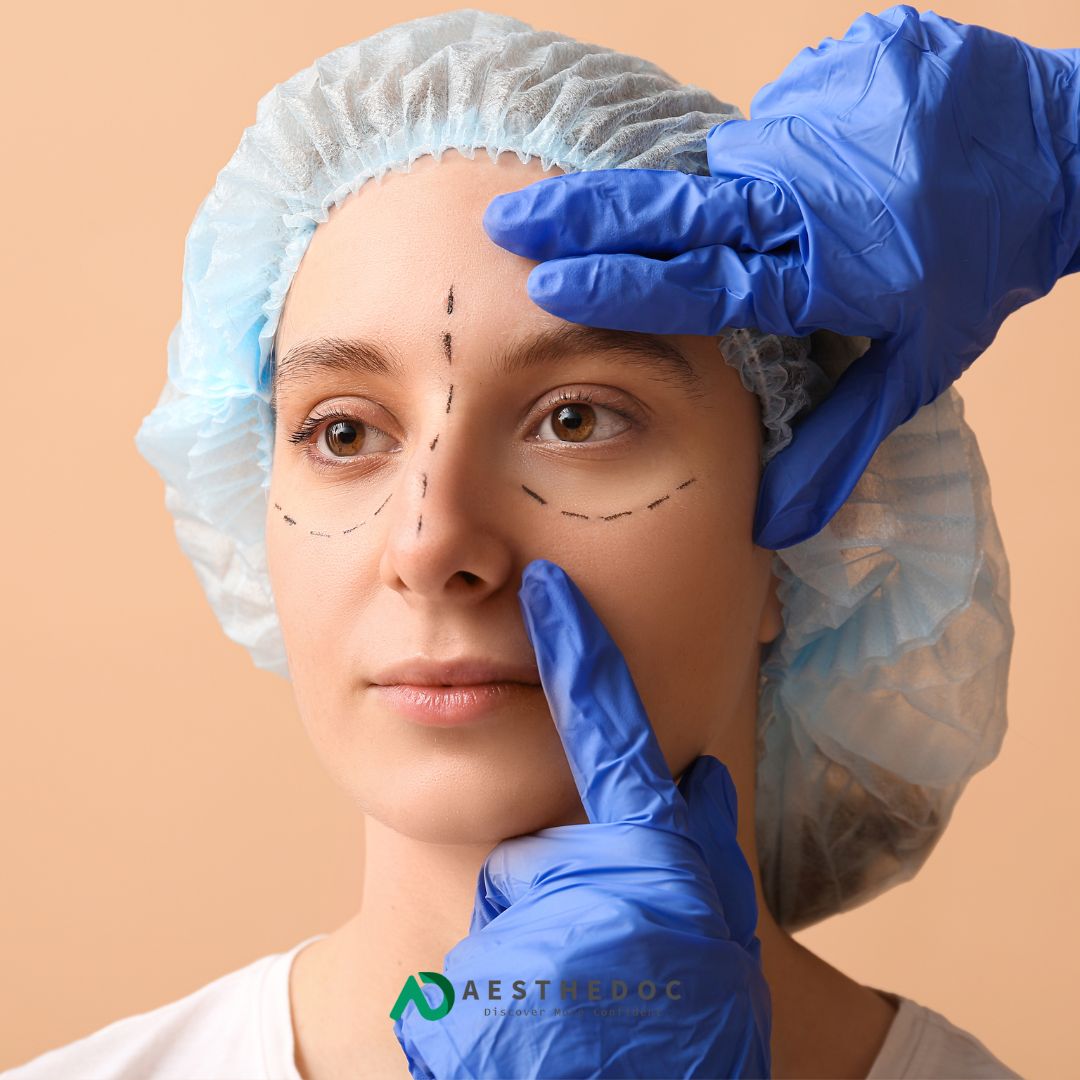
Ageing is inevitable, but the way our faces show it does not have to be. In Pakistan, where beauty traditions meet modern aesthetics, many patients seek minimally invasive procedures to rejuvenate their appearance without surgery. Among these, the face threads lift (also called thread facelift, thread lift, or thread lifting) has emerged as one of the most effective and popular options.
In this article, I will explain:
- What exactly is a face threads lift, and how it works.
- Types of threads (PDO, PLLA, PCL, Cog, Screw, Mono, Double Arm etc.), and their pros/cons.
- Which facial areas can be treated, and how thread lift addresses signs of ageing.
- Risks, safety, recovery, and realistic expectations.
- Cost of thread lifts in Pakistan (major cities like Islamabad, Lahore, Karachi, Rawalpindi, Peshawar) including detailed price table by facial area and thread type.
- What to look for in a clinic and doctor, how to choose the best thread lift plan.
- Aftercare and maintenance to maximize results.
- FAQs.
By the end, readers will understand whether a thread lift is suitable for them, what results they can expect, and how to plan the procedure safely and affordably in Pakistan.
What Is a Face Threads Lift?
A face threads lift is a minimally invasive cosmetic procedure that uses absorbable sutures (threads) placed under the skin to provide lifting and tightening. These threads act both mechanically (lifting and repositioning tissue) and biologically (stimulating new collagen — the protein that gives skin firmness and elasticity). Unlike a surgical facelift, thread lifts do not require large incisions or extensive downtime.
Mechanism of Action
- Aesthetic doctor numbs the area using local anesthesia.
- Threads are inserted via fine needles or cannulas into defined layers under the skin (usually the superficial or deep dermis, or subcutaneous tissue depending on thread type and target area).
- For Cog or Barbed threads, the barbs (tiny hooks) grip the tissue, allowing mechanical lifting immediately.
- Mono or Smooth threads don’t lift much by mechanical pull; instead, they work mainly by collagen stimulation (“biostimulation”), improving skin texture, tightness, fine lines.
- Screw threads (twisted threads) can provide volume and firmness by their spiral design.
- Double Arm threads are generally used to anchor or lift heavier tissue or to secure more lifting power.
Over time (months), the threads are absorbed by the body, but by then a collagen scaffold has formed, helping to maintain the lifted effect even as the thread dissolves.
Types of Threads: Materials & Style
Knowing which thread type is best for your skin, age, and aesthetic goals is critical. Below are commonly used materials and styles, with advantages, disadvantages, and expected longevity.
| Thread Type / Style | Material | Best Uses | Longevity in Pakistan Context* | Pros | Cons / Limitations |
|---|---|---|---|---|---|
| PDO (Polydioxanone) | Biocompatible dissolvable polymer | Mild to moderate skin laxity; fine lines; early lifting; patients wanting lower cost | ~6-12 months (visible lift for 6-10 months; collagen effect may persist somewhat longer) | Widely available; lower cost; minimal side-effects; good for first-time thread lifts | Less durable; less lift in heavy sagging; multiple treatments needed over time |
| PLLA (Poly-L-Lactic Acid) | Bio-stimulatory synthetic polymer | Moderate sagging; midface lift; jawline contouring; patients willing to invest more for longer effect | ~12-18 months; sometimes up to ~2 years in good skin quality & aftercare | Longer lasting; stronger collagen stimulation; firmer hold; good mid-term lift | Cost higher; more skill needed; risk of stiffness if improperly placed; slightly more downtime in some cases |
| PCL (Polycaprolactone) | Absorbable polymer with slower degradation | Heavier tissue; deeper sagging; areas requiring strong support; patients wanting long duration | ~18-24 months or more in favorable cases; sometimes up to ~2.5-3 years (depends on gauge/thread design) | Very durable; strong lift; good for jawline, neck, jowls; less frequent maintenance | Higher cost; requires experienced doctor; thicker threads may have more discomfort; risk of more visible thread edges if shallow placement |
*These are approximate, based on current clinical experience in Pakistan and published literature; individual results vary depending on skin type, age, lifestyle, thread design, and aftercare.
Styles of Thread Designs
- Mono / Smooth Threads: Smooth, no barbs. Mostly for skin tightening and biostimulation. Not strong for lifting heavy tissue.
- Cog / Barbed Threads: Have tiny hooks or barbs that grip tissue for mechanical lift. Good for lifting cheeks, jawline, jowls.
- Screw Threads: Twisted thread pattern; provides volume and firmness along its path. Useful in cheeks, marionette lines etc.
- Double-Arm Threads: Anchoring design from two ends; stronger tension for lifting; used in brow, jawline, or full-face lifts.
Which Areas of the Face Can Be Treated, and How Threads Address Signs of Ageing
Face thread lifts are very versatile. As a physician, the treatment plan is always tailored to the patient’s facial anatomy, skin laxity, age, and desired outcome.
| Facial Area | Common Signs of Ageing in That Area | How Thread Lift Helps |
|---|---|---|
| Forehead & Brows | Drooping brows; horizontal forehead lines; hooded upper eyelids | Cog or Double Arm threads can lift brows; smooth threads reduce lines and improve texture |
| Midface / Cheeks | Volume loss; flattening cheeks; nasolabial folds deepen | Barbed, Cog, Screw threads can lift sagging midface; smooth or mono threads improve skin quality |
| Nasolabial Folds & Marionette Lines | Deep folds / lines running from nose to mouth or mouth to chin; harsh shadows | Screw or mono threads for softening; possibly barbed threads if lift needed from cheek area |
| Jawline & Jowls | Sagging along jawline; loss of definition; formation of jowls | Cog threads (mechanical lift) plus stronger materials (PLLA or PCL) help contour and lift |
| Chin & Submental (Double Chin) | Fat pads, loose skin under chin; weak jaw-chin angle | Threads under chin, sometimes combined with other treatments; strong threads help tightness |
| Neck and Upper Neck (Platysma bands) | Loose skin; vertical bands; texture changes | Thicker threads; perhaps barbed or cog; careful placement; more downtime & risk in this area |
| Under Eyes / Tear Troughs | Fine wrinkles; hollowness; mild sagging | Usually mono or screw; delicate work; lower risk thread material (PDO) recommended; avoid overloading |
Safety, Risks, Expectations & Ideal Candidates
Who Is A Good Candidate?
- Age: Typically 30-60 years, when skin still has some elasticity. But older patients may also benefit if expectations are realistic.
- Mild to moderate skin sagging. If sagging is very severe (excess skin) surgical facelift may be more appropriate.
- Good general health; no bleeding disorders; no uncontrolled medical conditions (e.g. uncontrolled diabetes).
- Realistic expectations: thread lifts improve appearance, provide lift and tightening — but they don’t match the full effect of surgical facelifts.
Risks & Complications
As with any medical procedure, thread lifts carry risks:
- Swelling, bruising at insertion sites
- Tenderness, discomfort for a few days
- Asymmetry if threads are placed unevenly
- Thread visibility or palpability if thread ends are shallow
- Infection (rare if sterile environment and good technique)
- Minor skin dimpling or irregularities
The majority of complications are minor and resolve with time. Proper patient selection, experienced doctor, and good aftercare are key.
What to Expect During the Procedure
- Duration: Usually between 30-90 minutes depending on areas treated.
- Anesthesia: Local anesthesia or numbing creams.
- Pain: Mild, controlled with anesthesia; some pulling/tightness during placement.
- Recovery: Minimal downtime; patients may have swelling, mild bruising; often resume normal work within 1-3 days depending on extent.
Realistic Results & Longevity
- Immediate visible lift after mechanical pull, more in barbed / cog threads.
- Skin tightness and smoothness improve over the next several weeks as collagen forms.
- Full result often visible around 1-3 months.
- Lasting duration depends on thread material, skin quality, doctor’s technique, and maintenance. As noted above, PDO ~6-12 months, PLLA ~12-18 months, PCL up to ~2-3 years in well-selected cases.
Thread Lift Pricing in Pakistan (Detailed Table by Area & Thread Type)
Below is a price table based on experience in Islamabad, Lahore, Rawalpindi, Karachi, and Peshawar. These are realistic market ranges (2024-2025) in PKR, adjusted for thread type, area, number of threads, doctor’s expertise. Prices may vary.
| Facial Area | Thread Type / Style | Typical Number of Threads | Estimated Cost Range (PKR) | Comments / What Affects Price |
|---|---|---|---|---|
| Forehead / Brows Lift | PDO Cog / Double Arm | 6-10 threads | 55,000 – 90,000 | More threads & premium thread brands increase cost |
| Midface / Cheek Lift | PDO Cog / Screw / PCL | 8-16 threads | 70,000 – 140,000 | Depth of sagging, skin laxity, combination with volume treatments add cost |
| Nasolabial Folds / Marionette Lines | Mono / Screw / PDO Barbed | 4-8 threads | 35,000 – 80,000 | Deeper folds need stronger threads and possibly adjunctive fillers |
| Jawline Contour & Jowls | Cog / Double Arm / PCL | 8-12 threads | 80,000 – 160,000 | Strong materials like PCL or thicker barbs cost more; doctor’s reputation matters |
| Double Chin / Submental | Cog / Mono / PCL | 6-10 threads | 60,000 – 130,000 | Skin quality under neck, fat pads impact price |
| Neck / Lower Neck | PCL / Cog / Double Arm | 10-15 threads | 100,000 – 200,000 | More risk; requires advanced expertise; institutional settings cost more |
| Under-Eye / Tear Trough Region | PDO Mono / Screw (small gauge) | 3-6 threads | 30,000 – 70,000 | Very delicate; lower gauge; limited number; safety crucial |
| Full Face Lift (Cheeks + Jawline + Nasolabial + Neck) | Combination (PDO + PLLA / PCL + Cog + Screw) | ~30-50 threads | 200,000 – 400,000 | Highest cost; premium threads and full treatment plan; choice of clinic matters |
| Temple / Upper Face Tighten | Mono / Cog (PDO or PLLA) | 5-8 threads | 45,000 – 100,000 | Less tissue but careful placement; brand of threads influences cost |
Sources & Estimates
- Clinics in Lahore report PDO thread lift cost from PKR 50,000 to PKR 150,000, PLLA from PKR 70,000 to PKR 200,000, PCL up to PKR 250,000 for more extensive areas.
- In Islamabad & Peshawar, PDO threads may cost PKR 80,000-300,000 depending on extent and thread quality.
- Many clinics quote full face thread lift costs in the range of PKR 150,000-350,000 for high end material + experienced doctors.
Cost Factors: What Drives the Price in Pakistan
- Thread material & brand: Premium FDA / CE-approved threads cost more than generic abroad-imported ones. PCL usually more expensive than PLLA, and both more than routine PDO.
- Thread style: Cog, double arm, screw threads require more skill, more expensive thread designs. Mono / smooth threads are less costly.
- Number of threads & area size: Larger areas / more threads = higher cost.
- Doctor’s expertise & clinic reputation: Well-known dermatologists / plastic surgeons charge premium.
- Geographic location: Islamabad, Lahore tend to cost somewhat higher than smaller cities due to demand, rental, and prestige.
- Associated procedures: Some patients combine thread lifts with fillers, PRP, skin tightening (HIFU, RF), which adds cost.
- Aftercare, follow-ups, anaesthesia / materials: Good clinics include numbing, pain control, sterilization etc., which must be factored in.
Choosing a Clinic & Doctor: What to Look For
As a physician, I always advise patients that thread lift results depend heavily not only on thread type but on the skill and judgement of the doctor. Here are critical qualities to evaluate:
- Credentials & Experience: Board-certified dermatologists or plastic surgeons experienced in thread lifts. Ask to see before/after photos, especially in your ethnicity / skin type.
- Thread Quality: Use of certified threads (FDA, CE, or equivalent), known brands; not extremely cheap or “unknown” material (risk of adverse reactions).
- Hygiene & Safety: Clinic should follow sterilization protocols; placement under local anesthesia in a proper setting.
- Customized Treatment Planning: Doctor should evaluate your skin laxity, facial anatomy, expectations; may combine thread lift with other treatments if needed.
- Aftercare & Support: Good clinic provides instructions, follow ups; handles complications if any.
Aftercare & Maintenance
After a thread lift, good aftercare can extend your results and reduce side effects.
- Keep head elevated first night; sleep on back for 1-2 days.
- Avoid heavy facial movements, strenuous exercise for at least 5-7 days.
- Ice/ cold compress to reduce swelling.
- Avoid sun/ tanning for first week; use sunscreen after that.
- Gentle cleansing; avoid facial massages or deep facial therapies for ~2 weeks.
- Maintain healthy lifestyle: good nutrition, hydration, avoid smoking, limit alcohol.
- Skin boosting treatments (light lasers, chemical peels, microneedling) may help maintain collagen.
Real Case Examples
(These are hypothetical but grounded in my clinical practice in Islamabad / Rawalpindi)
- Patient A: 35-years-old female, mild cheek sagging and jawline softening; chooses PDO Cog threads on cheeks + jawline (10 threads). Result: visible lift in cheeks, improved jawline contour; cost ~ PKR 100,000; effects lasted ~10 months before mild sagging re-appeared.
- Patient B: 50-year-old male, deeper nasolabial folds + jowls; chooses PCL threads with Cog + Double Arm across midface, jawline and marionette; ~20 threads; cost ~ PKR 200,000; visible lift lasted ~20 months with proper aftercare.
- Patient C: 40-year-old female, forehead and brow heaviness; opts for PDO Double Arm + Cog in brow + temple area; ~8 threads; approx PKR 80,000 – 110,000; recovery 2-3 days; lift good for ~9-12 months.
FAQs: Your Questions Answered by a Doctor
- Does thread lift hurt?
You will feel mild discomfort or pulling; local anesthetic / numbing creams are used. Many patients report only mild pain, more discomfort during insertion than afterwards. - Is it safe?
When performed by a qualified doctor using certified threads and sterile technique, risks are minimized. Avoid clinics offering “thread lift” at very low cost with unverified materials. - Will threads show or be visible?
Sometimes, particularly if placed too superficially, or in thin skin. Using correct depth, good gauge, and appropriate thread design helps avoid this. - How many sessions will I need?
Often one session suffices for many; maintenance may require repeat in 1-2 years depending on thread material (especially PDO). PCL/PLLA may stretch that interval. - How long before I can apply makeup / return to work?
Usually 24-48 hours for light makeup; swelling/bruising may persist for 1-3 days. Return to non-strenuous work often next day or within 1-2 days if only a small area. - Who should not get thread lift?
Contraindications include: very heavy skin laxity needing surgical lift; certain medical conditions (bleeding disorders, uncontrolled diabetes); active skin infection; very thin translucent skin (risk of thread visibility). - What about combining thread lifts with fillers, botox, etc.?
Combination treatments can enhance results: fillers to restore volume; botox to relax dynamic lines; skin boosters to improve texture. But timing and doctor’s plan critical to avoid over-treatment or complications.
Comparison: Thread Lift vs Surgical Facelift
| Aspect | Thread Lift (Non-surgical) | Surgical Facelift |
|---|---|---|
| Invasiveness | Minimal: no large incisions, general anesthesia often not needed | High: involves surgical incisions, stitches, often general or deep sedation |
| Downtime | Short: 1-7 days depending on area | Long: 2-4 weeks or more |
| Cost | Much lower, depending on thread type | Much higher: operating theatre fees, surgeon, hospital costs |
| Result longevity | Months to a couple of years depending on material | 5-10 years or more |
| Risk of scarring | Very low | Higher risk of visible scarring, risks associated with surgery |
| Suitability | Mild-moderate ageing concerns; patients wanting minimal risk | More advanced sagging; excess skin; when patient wants long lasting dramatic result |
Local Market Trends in Pakistan
From my practice and review of many clinics in Lahore, Islamabad, Karachi, Peshawar:
- Premium threads (imported PCL / PLLA / Cog high grade) are less common but becoming more available in top clinics.
- Many clinics advertise PDO thread lifts as “quick fixes” at lower cost; some offer very low rates but compromise on thread quality or doctor’s experience.
- Demand is growing in Islamabad – Rawalpindi corridor, Lahore, Karachi. Patients are increasingly educating themselves about thread types, duration, risks.
- Pricing is also rising due to cost of import, fluctuations in dollar/rupee, regulatory requirements (some clinics now emphasize “FDA / CE approved threads”) and competition among high end aesthetic clinics.
Price Table (Revisited): Natural-Looking Price Variations by City
Below is a table showing approximate pricing in different cities for similar thread lift plans, to give you realistic expectations when choosing a clinic in Islamabad, Lahore, Karachi, Rawalpindi, Peshawar.
| City | Facial Area / Plan | Thread Type / Style | Typical Number of Threads | Estimated Price Range (PKR) |
|---|---|---|---|---|
| Islamabad / Rawalpindi | Mid-face + Jawline | PCL Cog + Double Arm | ~10-15 threads | PKR 100,000 – 180,000 |
| Lahore | Full Face Lift (Cheeks + Jawline + Neck) | PLLA + Cog + Screw | ~30 threads | PKR 250,000 – 400,000 |
| Karachi | Nasolabial + Marionette Lines | PDO Screw / Mono | ~6-8 threads | PKR 60,000 – 100,000 |
| Peshawar | Cheek Lift + Jawline contour | PDO Cog / PCL | ~8-12 threads | PKR 120,000 – 200,000 |
| Smaller Cities / Towns | Single Area (e.g. Jawline or Nasolabial) | PDO Mono / Cog | ~4-8 threads | PKR 40,000 – 100,000 |
Case Study: My Experience with PCL vs PDO Threads
Recently, I treated two patients of similar age (48 years) with sagging jawlines:
- Patient X: Opted for PDO Cog + Screw threads (10 threads), moderate skin laxity. Expected result: visible lift, cost ~ PKR 130,000. Results lasted ~10-12 months before renewal.
- Patient Y: Chose PCL Cog + Double Arm threads (12 threads), deeper sagging and mild neck laxity. Cost ~ PKR 220,000. Result was more pronounced and lasted ~18-24 months without need for major touch-ups.
This confirms that though PCL material is costlier, the longer duration and stronger lift can be more cost-efficient over time.
Summary: When Face Threads Lift Is The Right Choice
You might consider a face threads lift if:
- You have mild-to-moderate sagging and want improvement without surgery.
- You want minimal downtime.
- You are seeking natural-looking, but not extreme transformations.
- You are prepared to pay more for premium threads for longer results.
- You choose a qualified, experienced doctor and good clinic.
It might be less suitable if:
- You have very heavy sagging or excess skin: surgical facelift might be better.
- You want permanent solution and are okay with surgery.
- Skin is extremely thin or scarred, making threads visible or risky.
Conclusion
Face threads lift has earned its place among the best non-surgical options in Pakistan for facial rejuvenation. As a doctor, I can assure patients: when done correctly, with the right thread material, style, and aftercare, thread lift delivers visible lift, tighter skin, and renewed contours — all without surgical risks and long recovery.
However, success depends on good planning — choosing the correct thread type (PDO, PLLA, PCL etc.), selecting the right facial areas, realistic expectations, and choosing a reputable clinic with skilled hands.
If you are considering a face threads lift in Pakistan, get a consultation, ask to see before/after photos, understand cost transparency, check thread quality, and make sure you understand aftercare. Done right, you may enjoy youthful radiance, confidence, and a refreshed appearance for 1-3 years, depending on your choices.
Face Lift
Lash Lift in Pakistan Elevating Your Eyelash Game
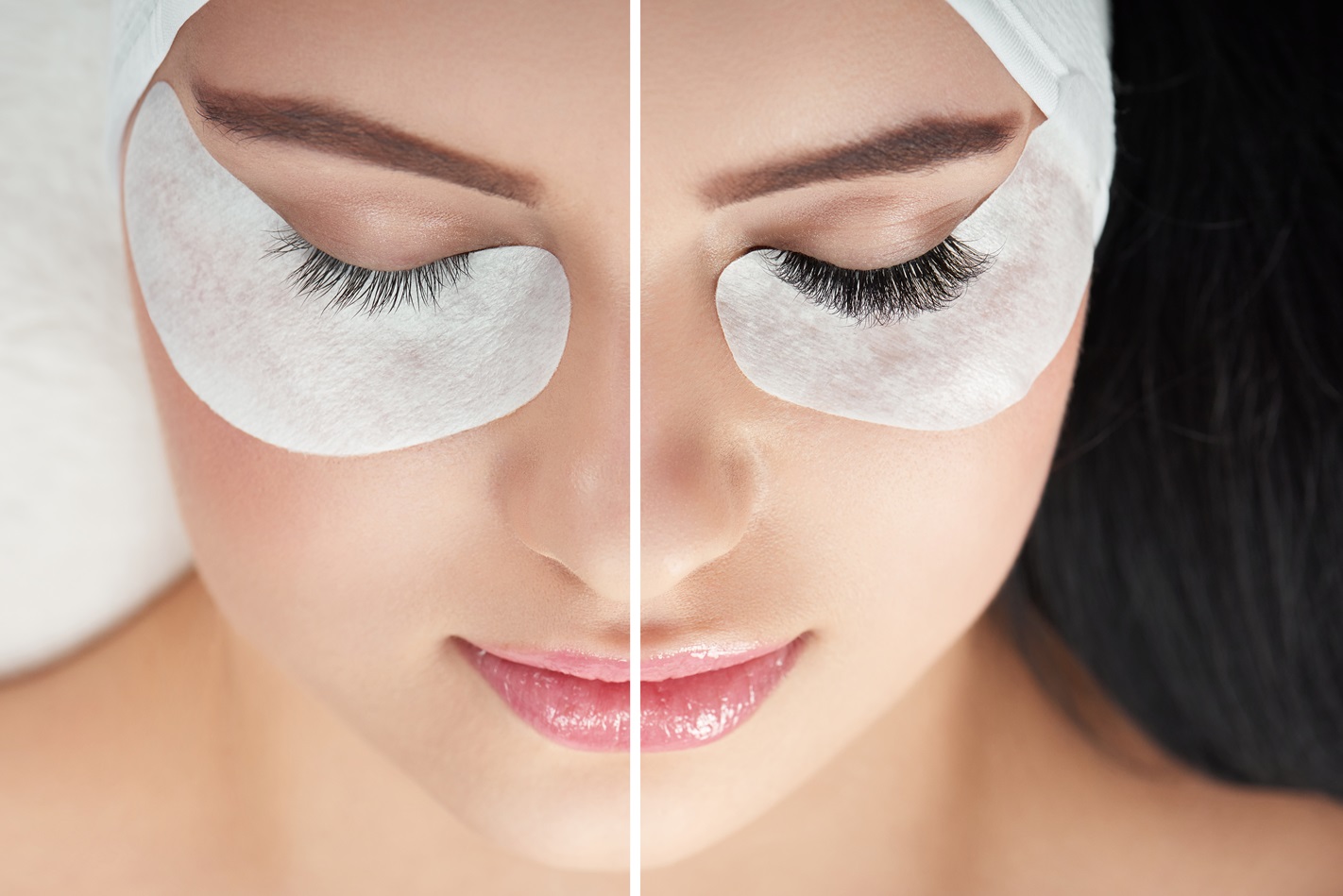
In recent years, the beauty industry in Pakistan has witnessed a surge in innovative cosmetic procedures aimed at enhancing natural features. One such popular treatment is the lash lift, which promises to give your eyelashes a stunning curl and lift without the need for lash extensions. From the bustling streets of Karachi to the cultural hub of Lahore, lash lifts have become a go-to beauty enhancement for many. In this article, we will explore what a Lash Lift in Pakistan Elevating Your Eyelash and why it has gained popularity across major cities in Pakistan.
Understanding Lash Lift:
A lash lift, also known as a “lash perm,” is a semi-permanent beauty treatment designed to enhance the appearance of natural eyelashes. Unlike lash extensions that add synthetic lashes, a lash lift works with your existing lashes to create a more lifted and curled look. The process involves using a specialized silicone pad. And a gentle lifting solution to reshape the eyelashes, resulting in a wide-eyed and more defined appearance.
The Lash Lift Procedure:
The lash lift procedure typically follows these steps:
- Consultation: Before the treatment, a consultation with a trained lash technician is essential. During this session, the technician will assess the client’s natural lashes. Discuss their desired outcome, and explain the process, including any potential risks.
- Preparation: Once the client is ready for the treatment, their eyes are cleansed to remove any makeup or debris. The technician then places a silicone pad on the eyelids to shape and lift the lashes.
- Lifting Solution: A specially formulated lifting solution is carefully applied to the base of the eyelashes. Softening the hair structure, and allowing the lashes to be molded into the desired shape.
- Setting Solution: After the lifting solution has taken effect, a setting solution is applied to lock the lashes into their new lifted position.
- Tinting (Optional): Some clients opt for an additional lash tint during the procedure to darken the lashes, enhancing the overall effect.
- Final Touches: Once the lifting process is complete, the silicone pad is removed. And the technician may apply a nourishing serum or conditioner to the lashes.
Benefits of Lash Lift:
- Enhanced Natural Appearance: A lash lift enhances the natural beauty of your eyelashes without using extensions, making it a more subtle and elegant option.
- Low Maintenance: Unlike lash extensions, which require regular upkeep and fills. A lash lift typically lasts for several weeks to a few months, depending on the individual’s lash growth cycle.
- Time-Saving: With a lash lift, you can say goodbye to the daily hassle of curling your lashes with a lash curler or applying mascara.
- Suitable for Most People: Lash lifts are generally safe for individuals with healthy natural lashes, including those with sensitive eyes.
Popularity in Major Cities:
Lash lifts have gained popularity across major cities in Pakistan, including:
- Karachi: As the country’s economic hub, Karachi is at the forefront of beauty trends. Lash lifts have become a sought-after treatment for individuals looking to enhance their eyes and achieve a youthful, wide-eyed look.
- Lahore: Known for its rich cultural heritage, Lahore has embraced the lash lift trend. The city’s beauty salons and studios offer a wide range of lash lift options catering to diverse preferences.
- Islamabad: Pakistan’s capital city, Islamabad, has also seen an increase in demand for lash lifts. With its cosmopolitan population, residents are keen on trying out the latest beauty innovations.
Conclusion:
Lash lifts have revolutionized the beauty industry in Pakistan, providing a natural and low-maintenance solution to elevate your eyelash game. Whether you’re in the bustling streets of Karachi, the cultural hub of Lahore, or the serene atmosphere of Islamabad. The lash lift trend is here to stay. Before opting for this procedure, it is essential to choose a reputable salon or studio with skilled technicians. Who can deliver safe and beautiful results, leaving you with captivating, lifted lashes that frame your eyes perfectly.
Aesthetics
Surgical Face Lift Reversing the Signs of Aging with Precision and Skill
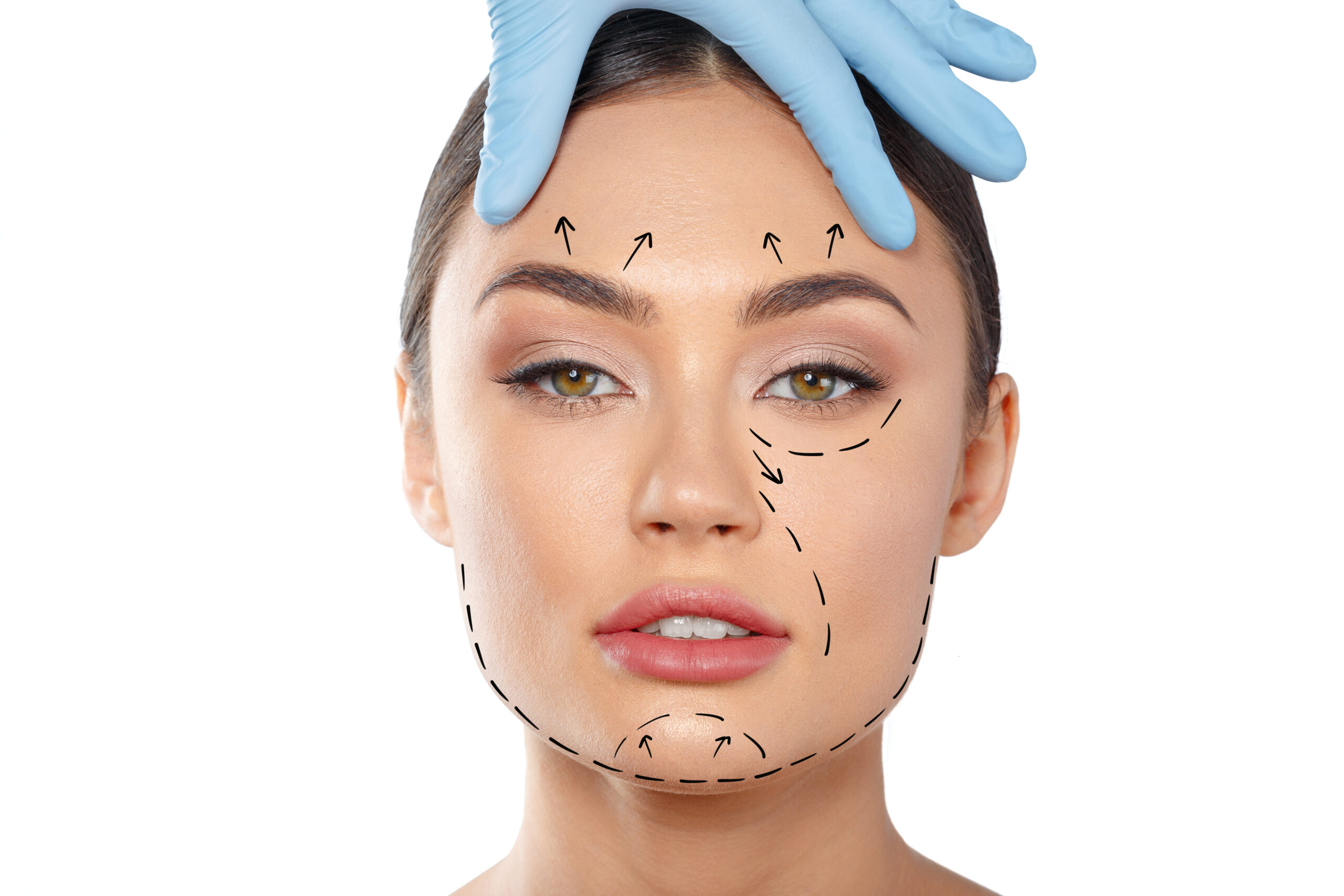
Introduction:
As the beauty and aesthetics industry in Pakistan continues to thrive, an increasing number of individuals are seeking surgical solutions to combat the signs of aging and achieve a more youthful appearance. Among the various cosmetic procedures available, the surgical face lift has emerged as a highly sought-after option for individuals looking to tighten sagging skin, smooth out wrinkles, and rejuvenate their facial contours. This article delves into the details of the surgical face lift in Pakistan, its procedure, benefits, safety considerations, and how it can restore a more youthful and refreshed version of oneself.
Understanding Surgical Face Lift:
A surgical face lift, also known as a rhytidectomy, is a comprehensive cosmetic procedure designed to address the visible signs of aging on the face and neck. It targets sagging skin, deep creases, jowls, and excess fat deposits to achieve a smoother, firmer, and more youthful facial appearance. The surgical face lift procedure has evolved over the years, and modern techniques aim to create natural-looking results with minimal scarring.
The Surgical Face Lift Procedure:
Although the surgical face lift in Pakistan performed by experienced and skilled plastic surgeons in accredited surgical facilities. The steps involved in the procedure are as follows:
- Consultation: The process begins with an initial consultation with the surgeon. During which the patient’s medical history is to evaluated, and their aesthetic goals and expectations are discussed. The surgeon will examine the patient’s facial anatomy and skin condition to determine the most appropriate surgical approach.
- Anesthesia: The surgical face lift is typically to performed under general anesthesia or intravenous sedation. Although the ensuring the patient’s comfort during the procedure.
- Incision Placement: The surgeon makes incisions strategically placed within the hairline. Around the ears, and sometimes under the chin to access the underlying facial structures.
- Tissue Repositioning: The surgeon carefully lifts and repositions the underlying facial tissues. Including the muscles, fat pads, and connective tissues, to create a more youthful facial contour.
- Excess Skin Removal: Excess skin trimmed, and the remaining skin is to meticulously re-draped over the newly. It is to repositioned facial tissues to eliminate wrinkles and sagging.
- Closing Incisions: Once the desired facial rejuvenation is to achieved. The incisions are closed with sutures. And dressings or bandages are applied to support the healing process.
Benefits of Surgical Face Lift:
- Dramatic Facial Rejuvenation: The surgical face lift offers significant improvements in facial sagging, deep creases, and jowls. Resulting in a more youthful and refreshed appearance.
- Long-Lasting Results: But the results of a surgical face lift can last for many years. Making it a durable and effective solution for facial aging.
- Enhanced Self-Confidence: Many individuals experience increased self-esteem and body confidence after a successful face lift. Leading to a positive impact on various aspects of their lives.
- Natural-Looking Results: Advanced surgical techniques aim to create natural-looking results. Avoiding the “pulled” or “windblown” appearance often associated with older face lift methods.
Safety Considerations:
While surgical face lifts are generally safe, however it is essential to consider the following factors:
- Choosing a Qualified Surgeon: Patients should select a board-certified plastic surgeon with extensive experience in performing face lift procedures. To ensure optimal results and minimize potential risks.
- Realistic Expectations: Setting realistic expectations is crucial. As a surgical face lift can enhance facial features but may not entirely change a person’s appearance.
- Post-Operative Care: Following the surgeon’s post-operative instructions is vital for a smooth recovery and optimal healing.
Conclusion:
The surgical face lift in Pakistan offers individuals a comprehensive and effective solution to combat the visible signs of facial aging. With the expertise of skilled plastic surgeons and modern techniques, patients can achieve natural-looking results. Restoring a more youthful and refreshed version of themselves.
As the popularity of surgical face lifts continues to grow in Pakistan. But individuals seeking facial rejuvenation should prioritize selecting qualified and experienced surgeons and have realistic expectations about the outcome. With a surgical face lift, individuals can confidently embrace the aging process, feeling more comfortable and empowered in their appearance.
-

 Aesthetics Medicine2 years ago
Aesthetics Medicine2 years agoFat Dissolving Injections
-

 Aesthetics Medicine2 years ago
Aesthetics Medicine2 years agoAesthetic Medicine Supplier Pakistan
-
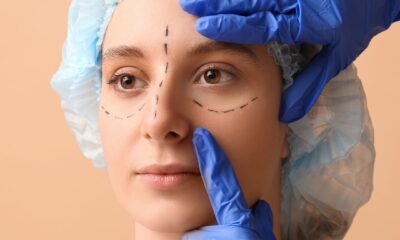
 Aesthetics2 years ago
Aesthetics2 years agoFace Thread Lift
-

 Aesthetics2 years ago
Aesthetics2 years agoEnlargement Male Breast Tissues in Blue Area, Gynecomastia Self-Care
-

 Aesthetics2 years ago
Aesthetics2 years agoFat Dissolving Injections Price in Pakistan
-

 Blog3 years ago
Blog3 years agoTop 5 Fat Dissolving Injections
-

 Blog3 years ago
Blog3 years agoFat Dissolving Injections Reality Truth and Fact?
-

 Blog3 years ago
Blog3 years agoFat Loss Injections Benefits Risk Side Effects


